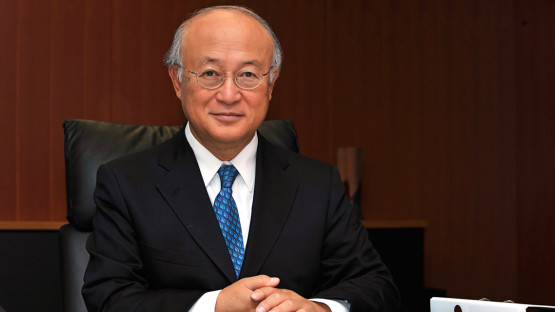(As prepared for delivery)
Good morning, Mr Chairman, Ladies and Gentlemen.
I welcome you all to this IAEA International Symposium on Uranium Raw Material for the Nuclear Fuel Cycle – URAM 2018. This is our premier event focusing on the uranium production cycle.
As you know, nuclear power is one of the lowest-carbon technologies for generating electricity.
There are now 451 nuclear power reactors in operation in 30 countries. Another 58 reactors are under construction, mostly in Asia. Some 30 countries are considering introducing nuclear power.
In my opinion, it will be difficult for the world to meet the twin challenges of securing sufficient energy, and limiting the average global temperature increase to 2 degrees centigrade, in the coming decades without making more use of nuclear power.
IAEA projections show that nuclear power’s global potential up to 2050 remains high, but its expansion is expected to slow in the coming years.
Promising work is underway on new generations of nuclear power reactors that require less uranium, including some types of small, medium sized or modular reactors. Some countries are interested in the thorium fuel cycle.
However, for the foreseeable future, most new nuclear power technologies will still run, wholly or partially, on uranium.
Identified uranium resources are sufficient for well over 100 years of supply. But the current over-supply may not last for ever. It is therefore important that this vital resource is mined, produced and managed sustainably.
It is also essential to take full account of environmental concerns, both to ensure public acceptance today and to avoid troubling legacy issues in the future.
This IAEA Symposium, the fourth in a series that began in 2005, will consider the availability of uranium to meet growing future demand and ways in which production can be stepped up in good time to meet that demand.
The latest research and technologies related to the development of new uranium sources will be considered, as will technical, economic, environmental, safety and social aspects of uranium exploration and mining.
Ladies and Gentlemen,
Sustainable nuclear power requires a sustainable nuclear fuel cycle, which starts with secure supplies of uranium.
The IAEA supports Member States with all aspects of the uranium production cycle, from exploration, mining and processing, to mine closure and site remediation.
We publish best-practice guidelines for the various stages of uranium production. We offer training and expert peer review services. We produce a number of databases and recently published a unique geological map of world uranium deposits. It is the most comprehensive compilation of relevant information published to date.
I encourage all Member States to make full use of IAEA peer review services, including our Uranium Production Site Appraisal Team missions, known as UPSAT.
Ladies and Gentlemen,
Let me conclude by wishing you a very productive meeting. I am sure you will consider exciting new approaches to ensuring a sustainable supply of uranium in the coming decades. I look forward to learning about the outcome of your discussions.
Thank you.


